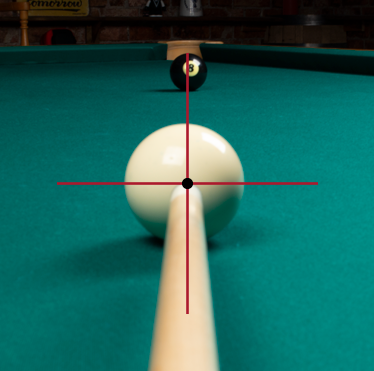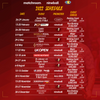7 Tips & Drills to Instantly Improve Your Pool Skills

Whether you have visions of becoming the second coming of Paul Newman in The Color of Money or simply want to sharpen your skills and beat your mates down at the pub, you need to practice, and do it the right way.
The truth is many beginner pool players go about it the wrong way. Far too often, they skip the fundamentals and jump right into advanced concepts, like cue ball spin techniques and draw shots.
You wouldn’t drive a classic Ferrari without learning to work a clutch and shift gears, so why would you practice difficult rail combos without first learning fundamental pool mechanics and techniques?
Sure, you’ll need to practice technical strategies and thoughts if you want to become an advanced billiards player.
However, for most of us, becoming a better pool player starts with consistently practising basic, fundamental pool mechanics, techniques, and shots.
Regardless of where you want to take your pool game, mastering the basics will make you a much better player.
Whether you’re playing 8-Ball, 9-Ball or any other billiards game, here are some fundamental tips and drills to instantly improve your pool skills.
1. Practice Your Grip
Many pool and billiard beginners make the mistake of gripping the cue much too tight.
While it’s natural to think gripping the cue harder will give you better precision and control over your shot, this is the wrong approach.
You should use a loose, light grip instead. Why?
For starters, gripping the cue too tightly can cause the butt of the cue to rise when shooting, making it much more difficult to execute a straight, accurate shot.
An overly tight grip can also increase your odds of hitting the cue ball too low, causing it to jump right off of the table.
Instead of giving the cue a death grip, lighten it up a bit so that you’re able to pick up the cue from the table. Hold it lightly as you rest it on your fingers.
When practising, make sure to spend some time focusing on your grip too. Try to keep your grip light and soft while shooting with total control.
Once you find the right balance, keep practising until gripping the cue both lightly and in control becomes second nature.
2. Work on Your Shooting Stance
Aside from your grip, your stance is one of the most essential and fundamental aspects of your shot to practice.
Generally, your front foot and rear foot should be shoulder-width apart. Your back foot should also be at a 45-degree angle, and your front foot pointed straight. Practice shooting in this stance. You should feel comfortable and stable.
A lot of pool players place too much weight on their front or rear foot. Your weight should be equally balanced and dispersed evenly on both feet.
When leaning forward to take a shot, make sure to keep your head stable, low and level over your cue. Also, transfer some of your weight to your bridge hand to form a tripod with both of your feet.
While this is the ideal stance and body position, it’s crucial for it to feel comfortable.
Once you have the proper stance down and it feels low, balanced, and comfortable, practice moving around the pool table and keeping the stance the same as you shoot from different spots.
As is the case with the other parts of your shot, consistency is key.

3. Align Your Body Properly
Like your grip and stance, proper body alignment is a must when it comes to accurate pool shooting.
For proper alignment, your head, eyes, stroking arm and cue should all be lined up straight in the direction of your target ball. Many avid billiards players call this the “vision centre.”
When practising your body alignment, try keeping your head low and straight with your aiming line and your eyes level. Meanwhile, like the cue up so its tip is centred with the cue ball.
When your cue and sightline are aligned, turn your attention to your forearm and make sure it is in line with the cue.
Practice setting up your alignment and then take some practice shots until it feels right. You can hit the cue ball across the table to the opposite corner pocket or stroke straight shots to the opposite cushion while trying to stay perfectly aligned and dead centre.
Keep doing this over and over until proper alignment becomes an unconscious aspect of your shot.
4. Imagine an Aiming Line
From combo and bank shots to complicated angles, the path to your chosen pocket isn’t always obvious. However, you should always know which pocket you’re aiming to sink and find the centre of the target pocket when lining up for a shot.
Envision a line running from the pocket’s centre to the centre of the ball you plan on sinking in it. This imaginary aiming line should continue right through the target ball all the way to the cue ball, allowing you to line up and make contact with the centre point of the target ball.
With your eyes, follow this line all the way from the centre of the target pocket through the target and cue ball. When you’re ready to shoot, follow the line and focus your eyes on the centre of the target ball.
When practising, try making these imaginary aiming lines a regular part of your pre-shot routine. Soon, they become a natural aspect of your routine and virtually every shot you take.
5. Practice swinging like a pendulum
As you now know, it’s vitally important to align your body with your aiming line when shooting. However, to stay in alignment, your shooting arm must be still.
Many newcomers to billiards and pool move their upper arms way too much when shooting. You can avoid this problem by envisioning the upper and lower parts of your shooting arm as a swinging pendulum.
Below your elbow, your shooting arm should swing back and forth to drive the cue and take a shot. Your upper arm, however, should remain still and even throughout the shooting process. To do this, keep your shooting hand directly under your elbow when holding the cue.
The lower part of your arm should swing past your elbow when striking the cue ball, creating a pendulum-like movement.
Practice making these smooth pendulum strokes with shots of all different lengths until you get it right. Your backswing should always be slow, but you can completely control your shot speed with your arm’s forward swing.
6. Work on your bridges
If you’re new to pool, your bridge is your non-shooting hand, which you use to slide and guide the cue into the cue ball. Needless to say, it’s one of the most critical components of your shot and overall pool game.
You can master everything above, but if you’re inconsistent or clumsy with your bridge, your game will suffer.
For most players and shots, there are two primary types of bridges: the closed bridge and the open bridge.
- The closed bridge is often used by advanced players who strike the cue ball harder and with more spin.
- The open bridge, on the other hand, is better suited for average players who generally shoot a bit softer and use less spin.
Working on Your Open Bridge
- To work on your open bridge, firmly press the fingers of your non-shooting bridge hand down on the table. Then, press your thumb and forefinger together to create a “V”.
- Next, place the end of the cue on the “V” and use your thumb and index finger to guide your shots.
- If needed, you can lower or raise the bridge by adjusting the angles of your fingers when pressed against the table. The key is to use your fingers to create a solid foundation for your cue.
Work on your open bridge until it becomes comfortable and consistent. When you master the open bridge and continue improving your pool skills, you can then move on to the closed bridge and other bridges, such as the rail bridge and over-the-ball bridge.
7. Develop a Pre-Shot Routine
A pre-shot routine will help you get in rhythm and pace yourself throughout a game when you’re in between shots. Unlike your bridge, alignment, stance, grip, and other aspects of your game, your pre-shot routine is completely personal.
That being said, many players use this time to survey the table, chalk the tip of their cue, focus on the target pocket, and get lined up for their shot.
To do this, align your rear foot, place the cue directly behind the cue ball, square your head, and focus your eyes toward the centre of the target ball before you get in your shooting stance.
With a little practice, this aspect of your pre-shot routine will become fluid and happen naturally and rhythmically before every shot. Whatever it is, developing a pre-shot routine and consistently doing it will significantly improve your pool game.
A great pool table will improve your pool game as well. Excellence Billiards will have the equipment and the pool tables available to purchase now. Come in and have a look at our range of high quality slate pool tables.
Copyright © 2022 Quedos Billiard Tables.
- Katherine Aboud







